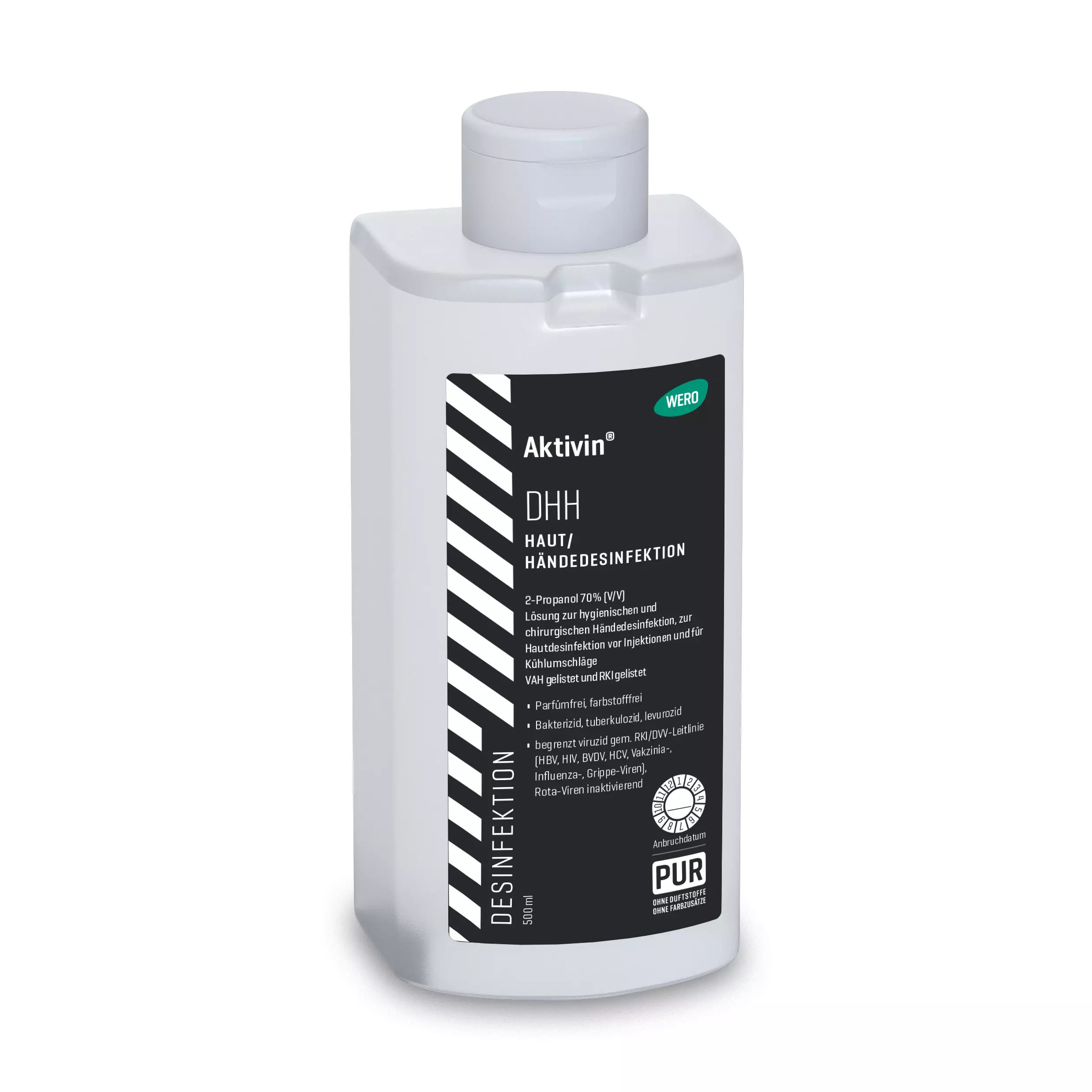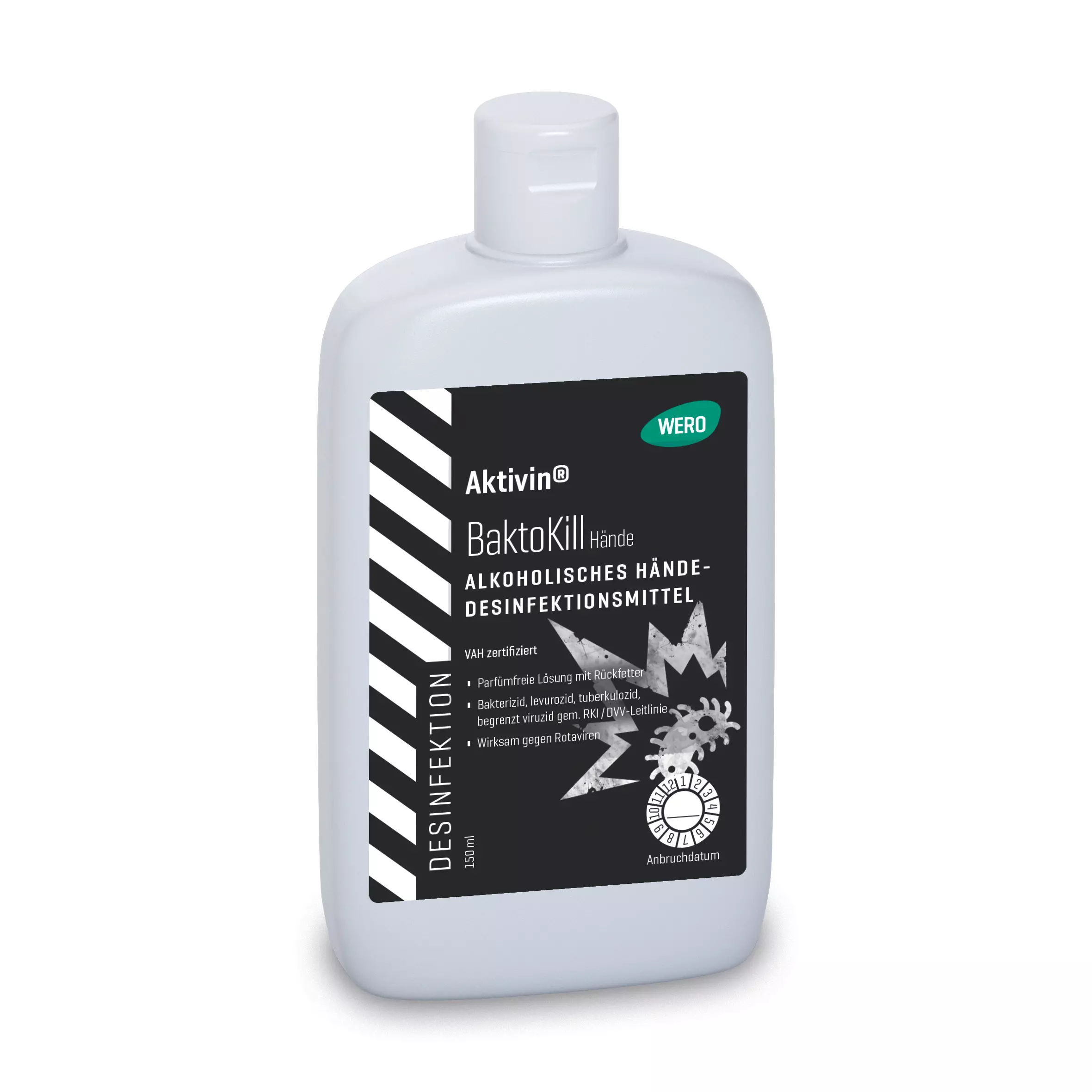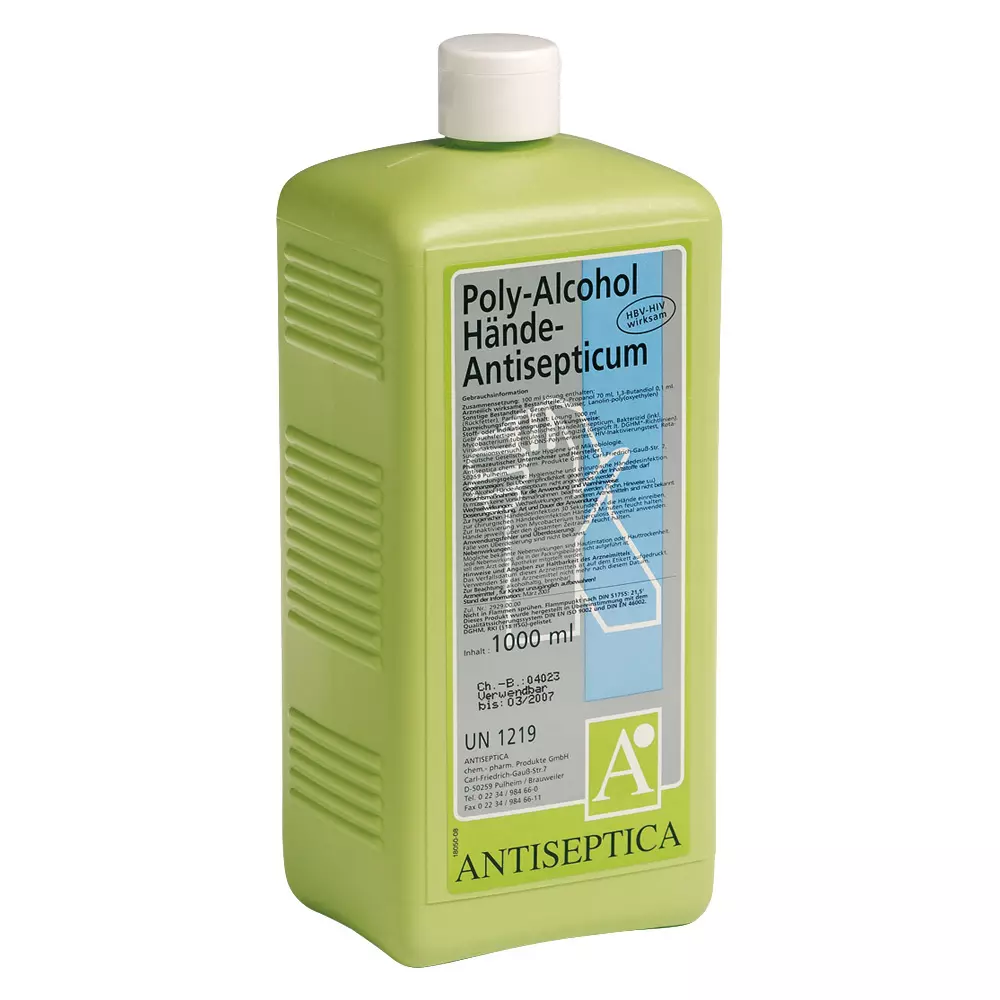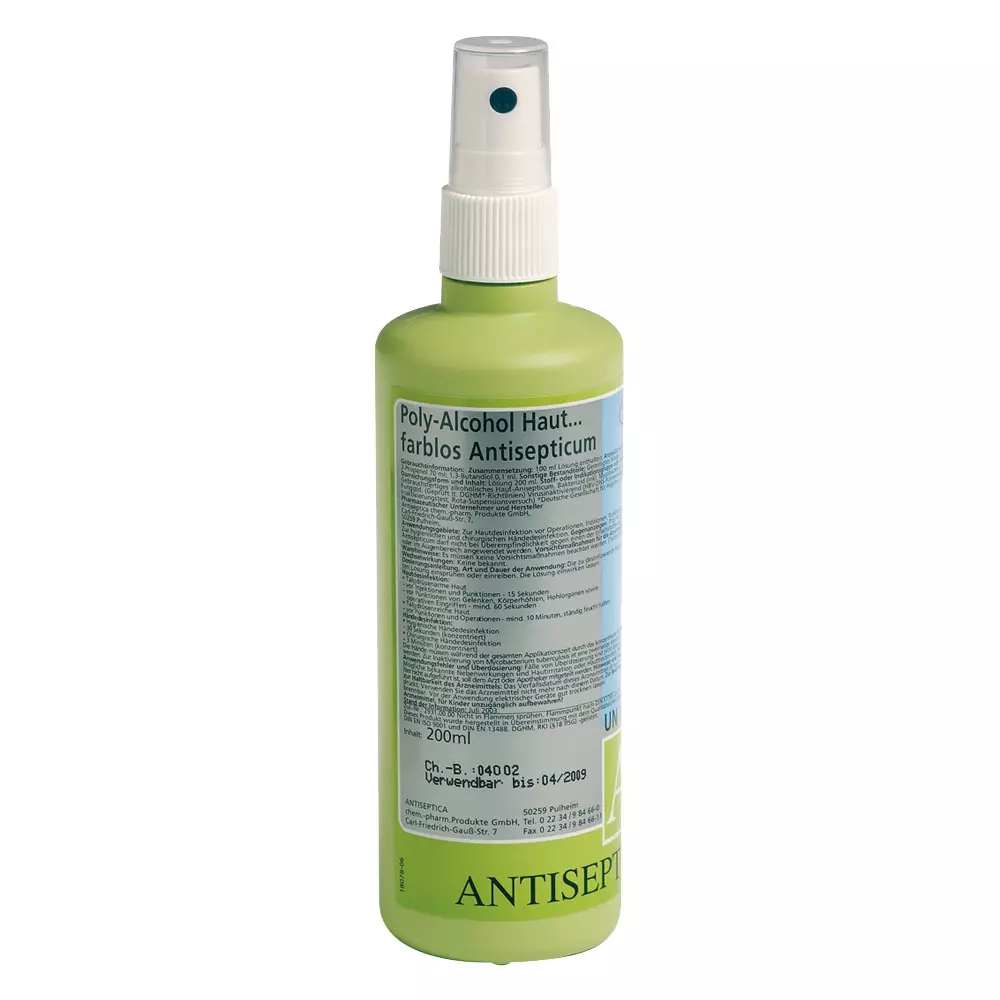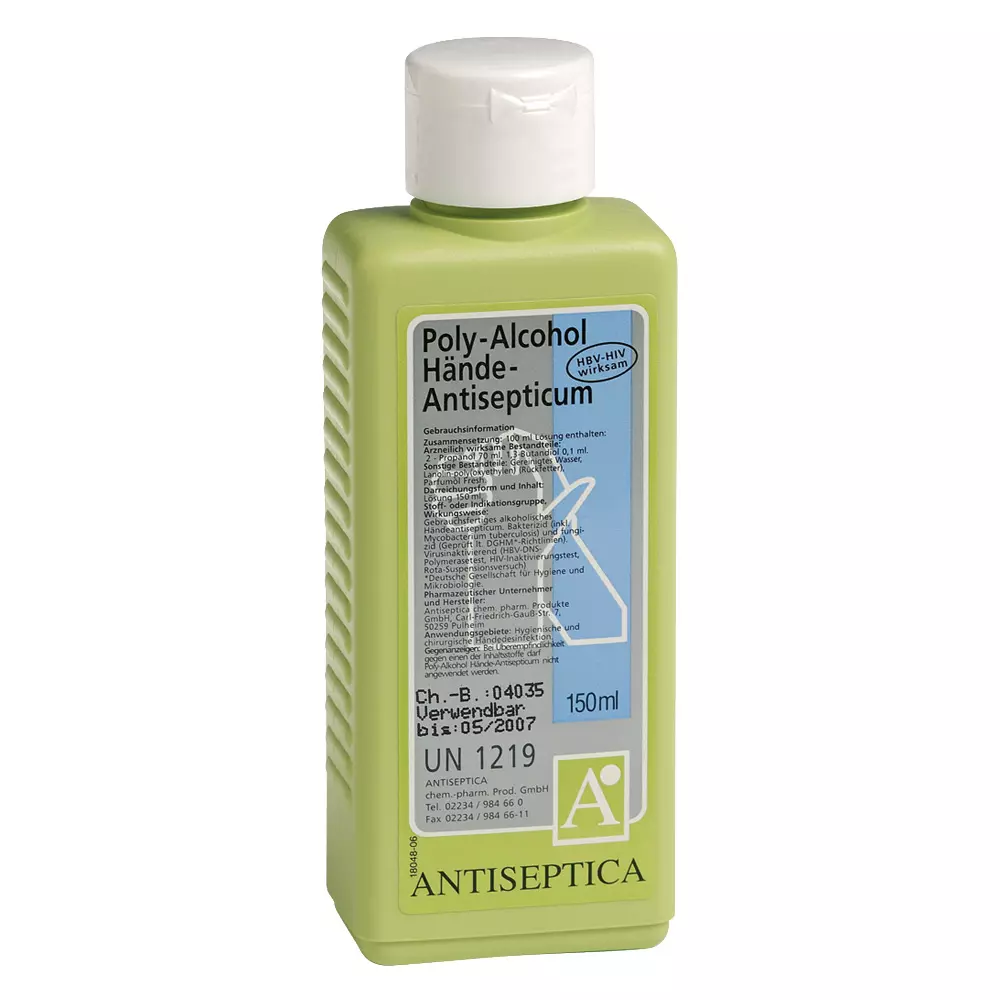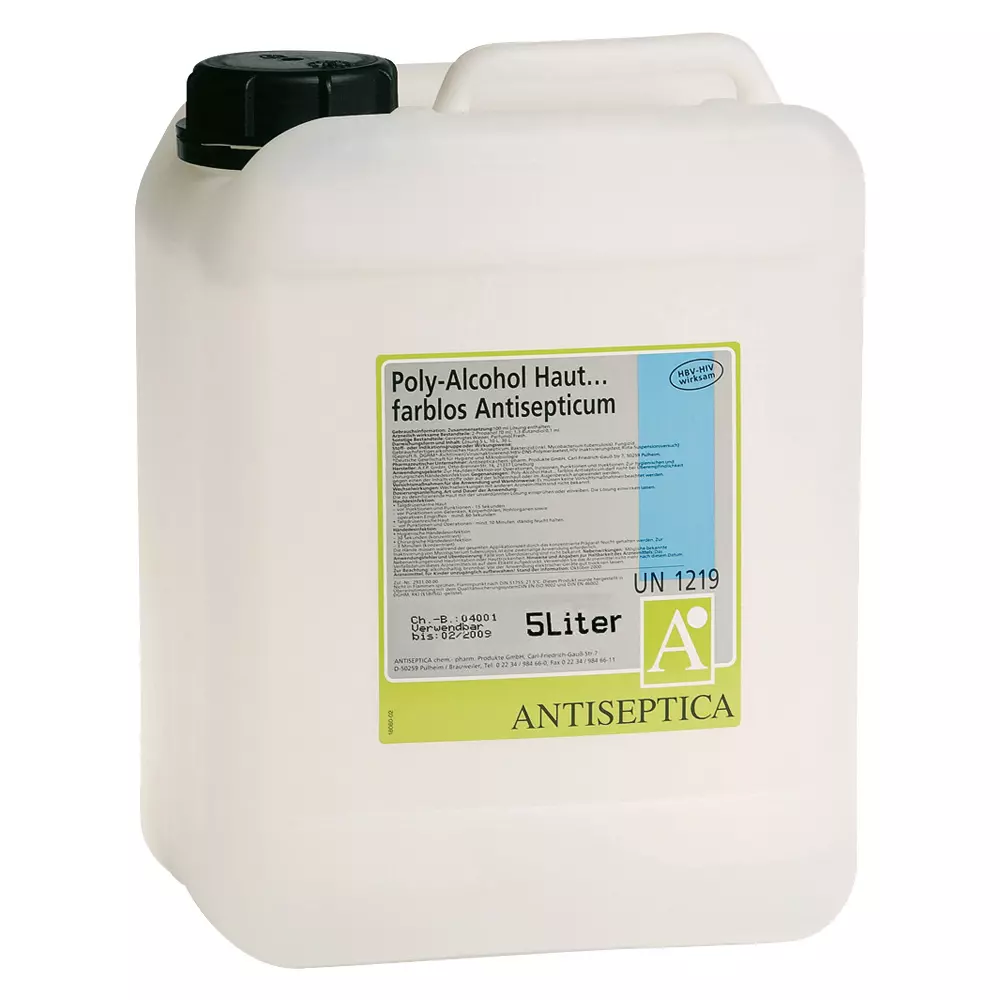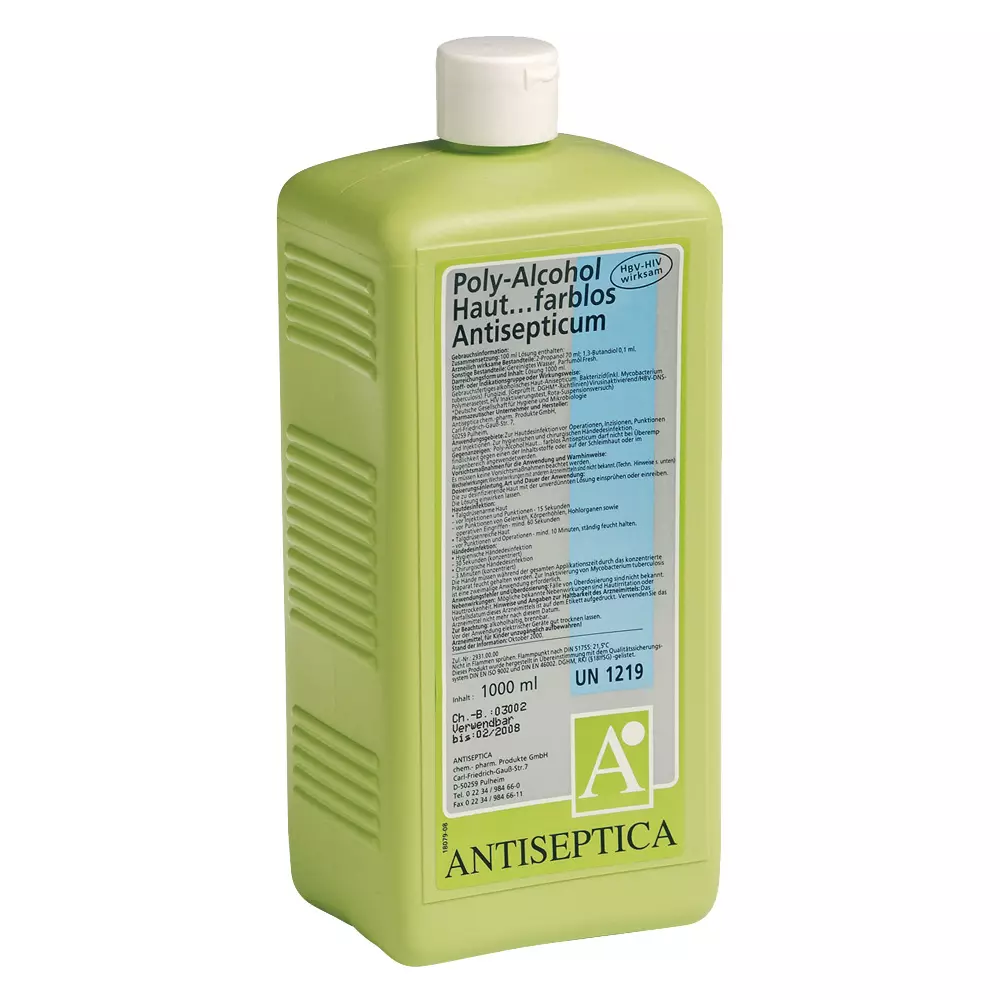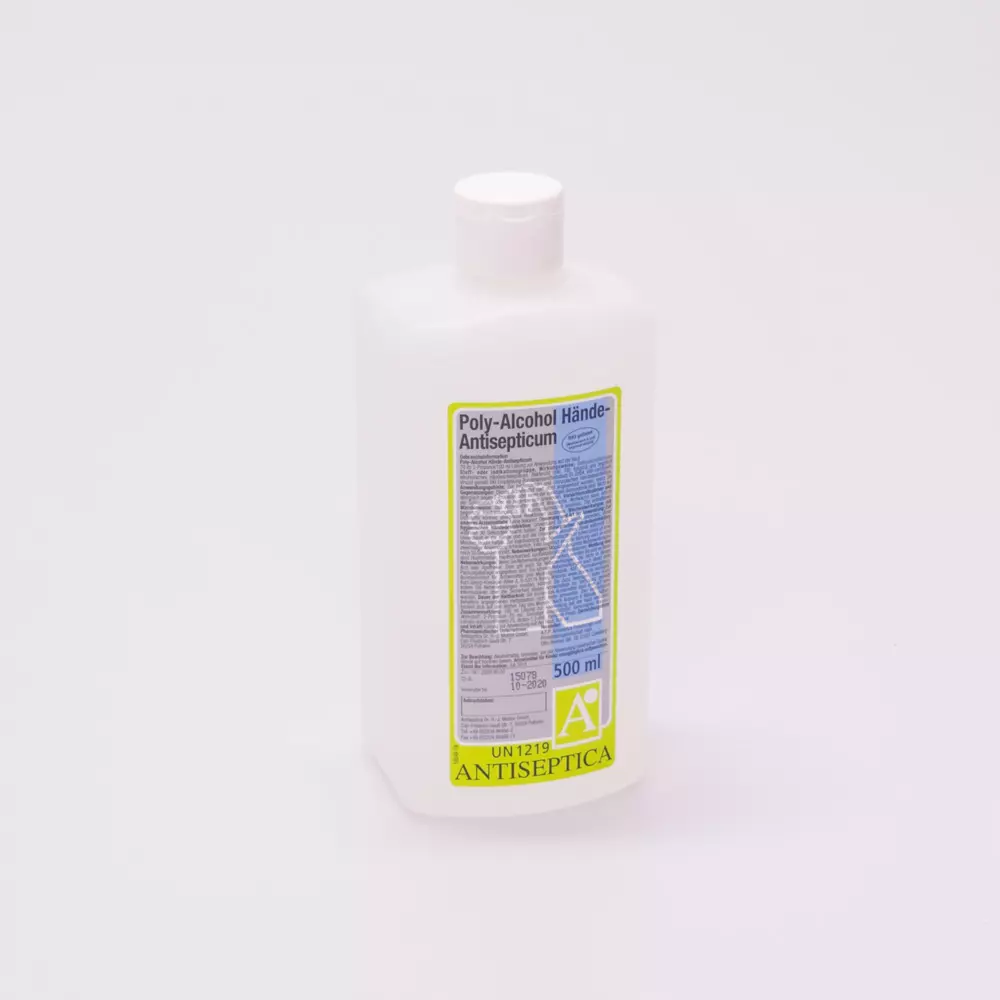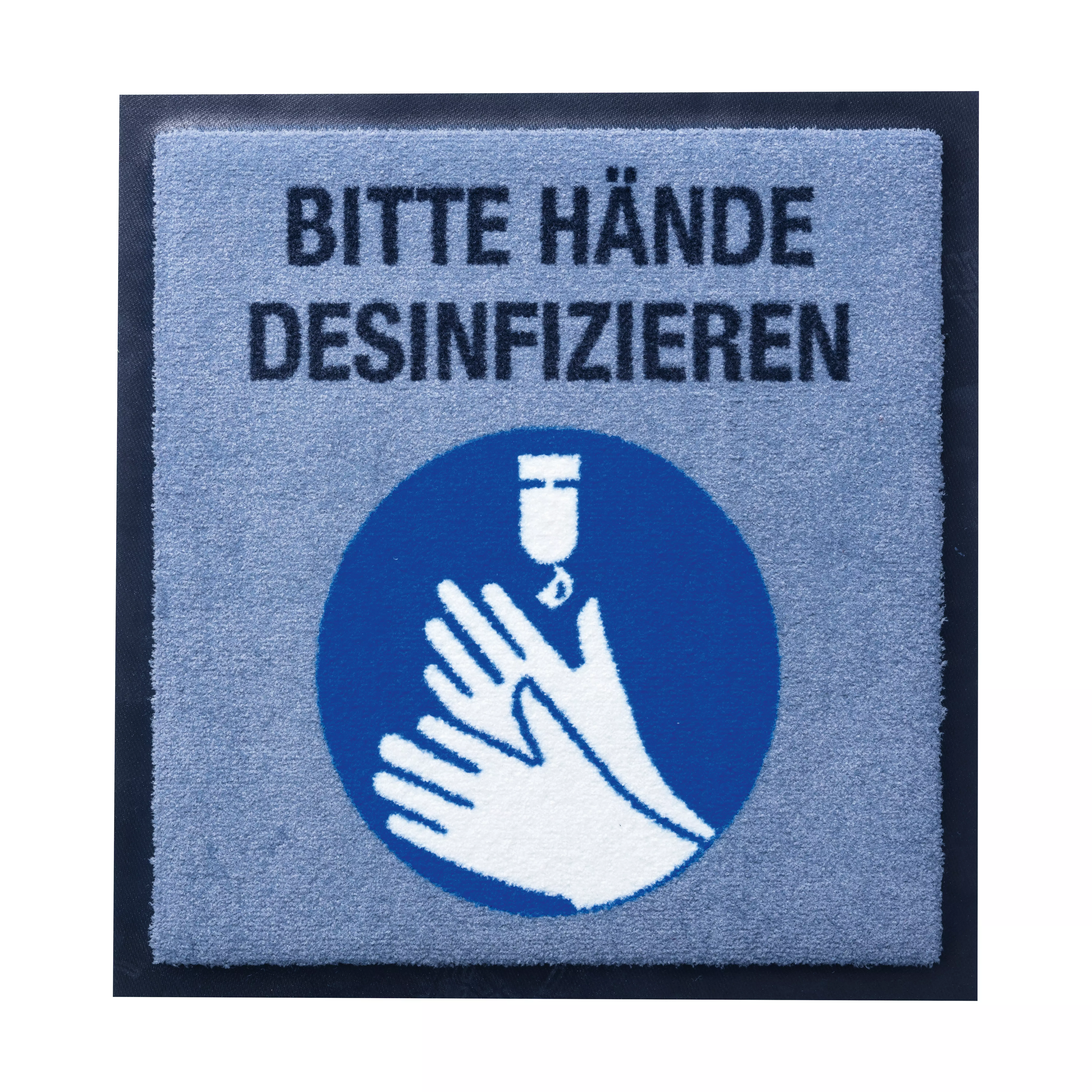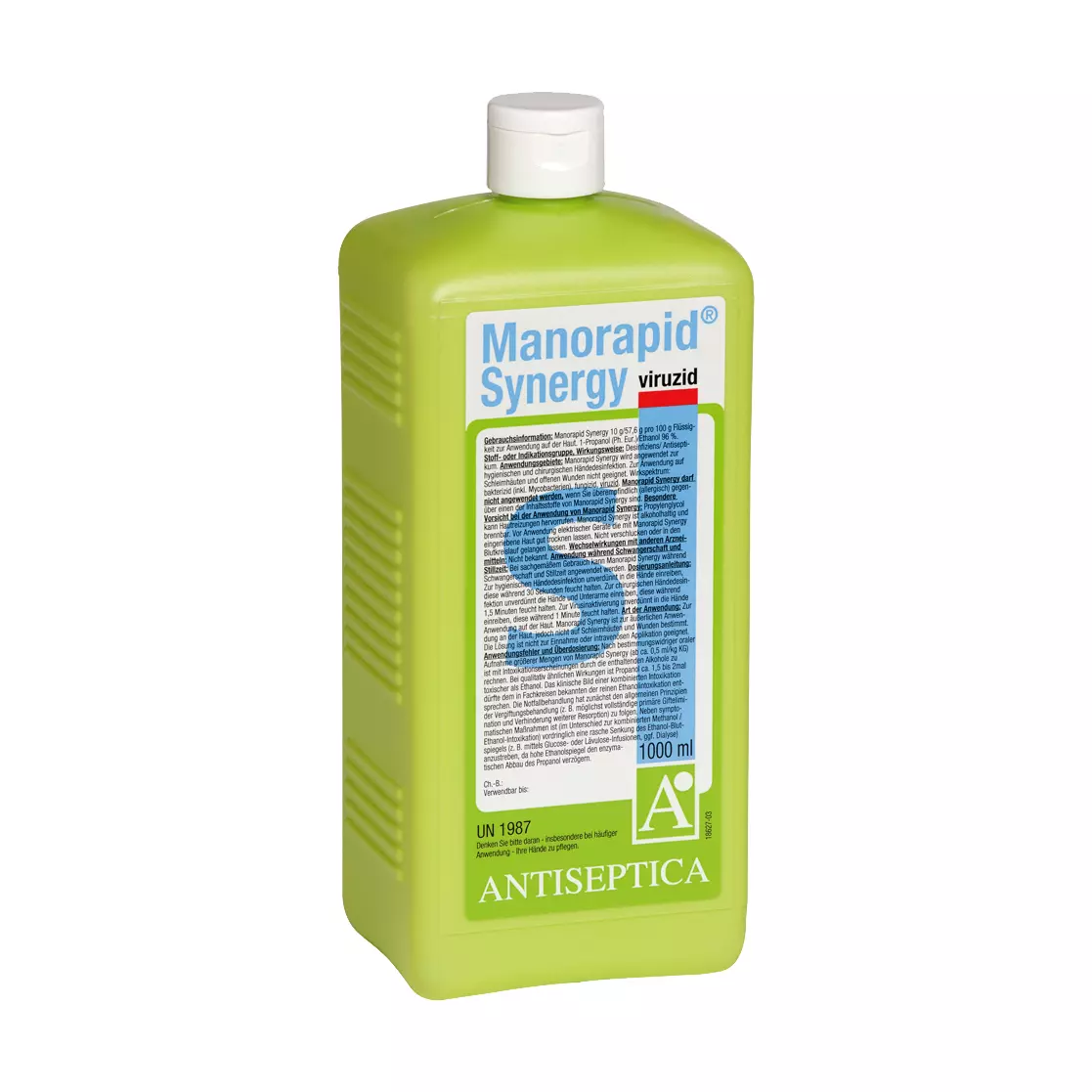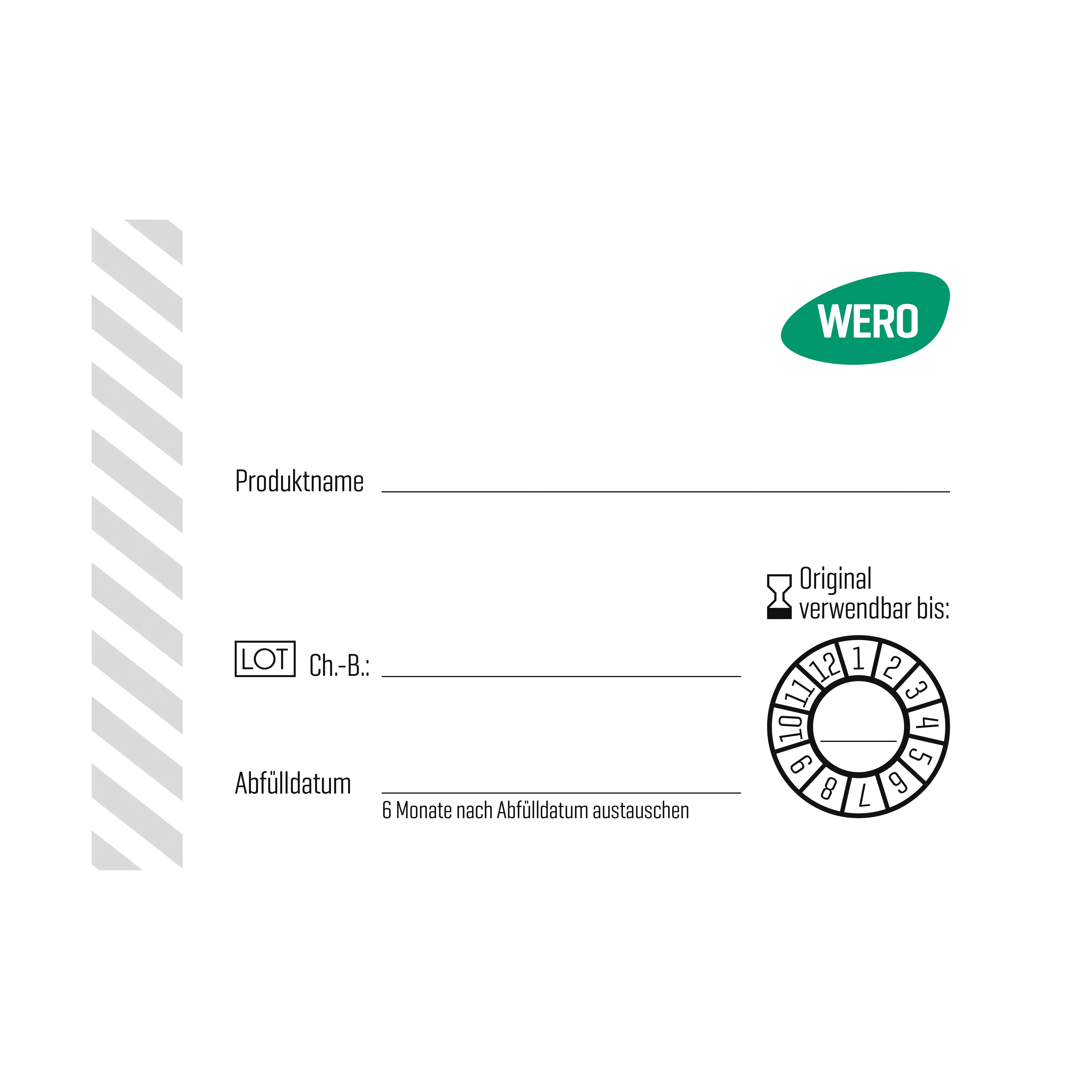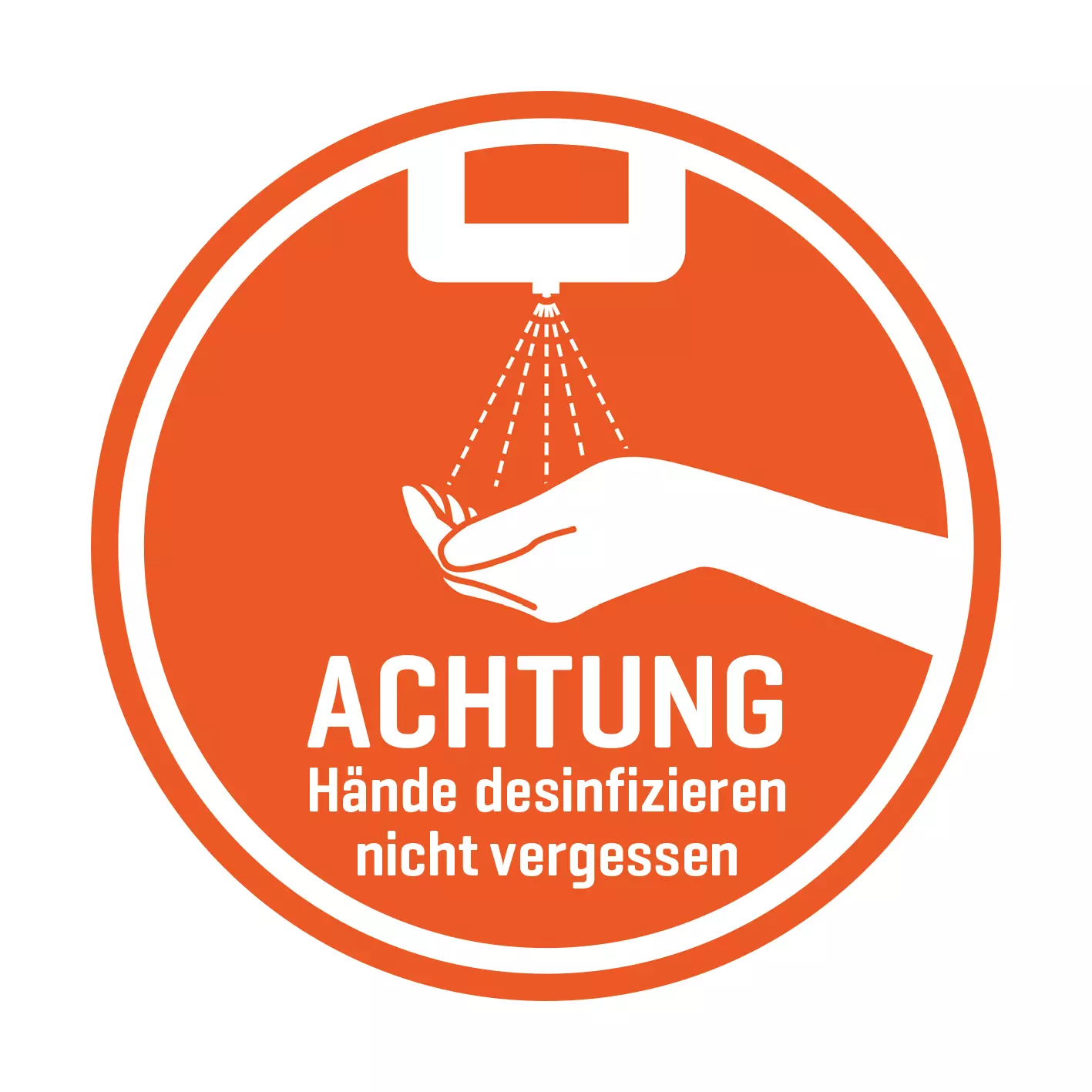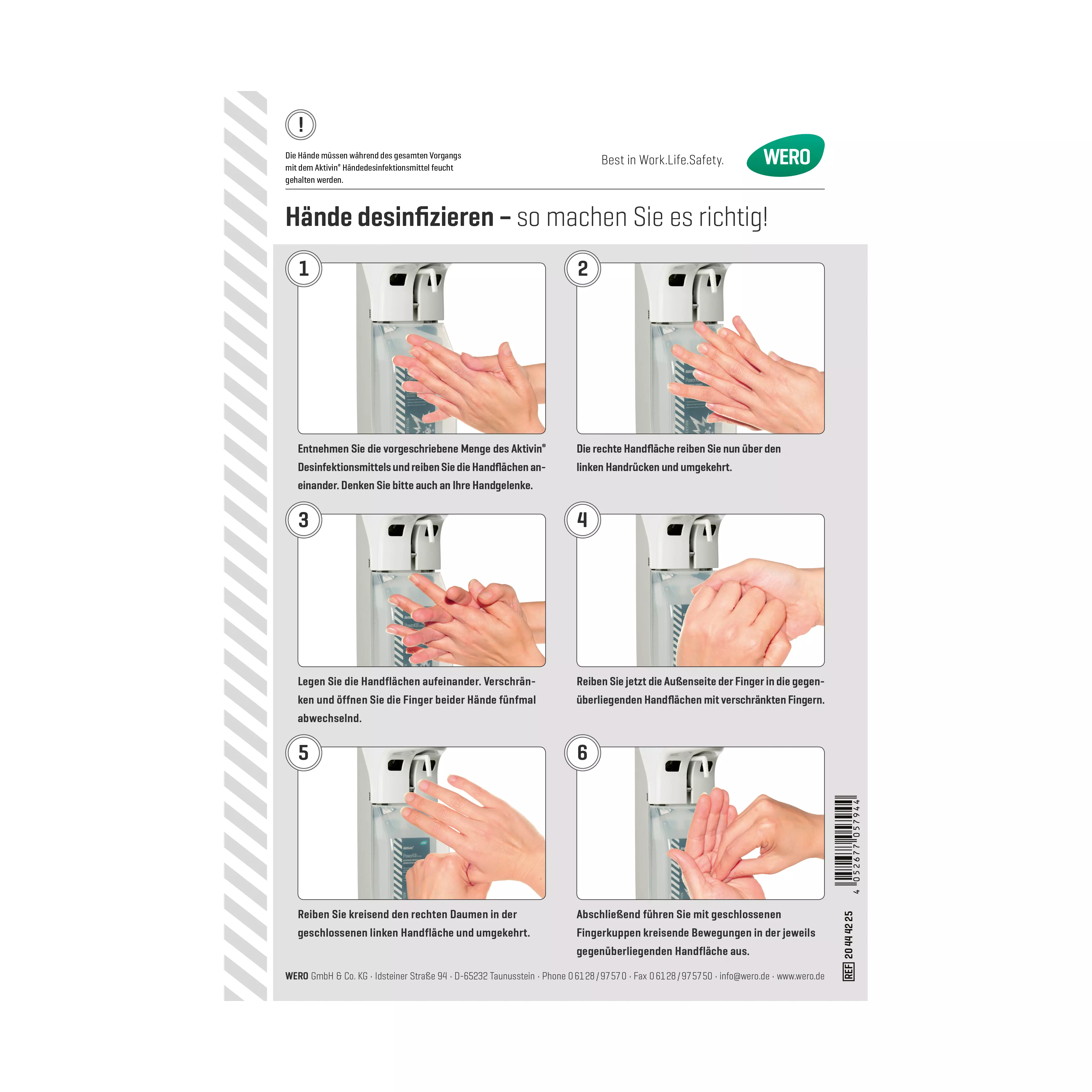Buy hand sanitiser online
Content: 0.5 l (€25.98* / 1 l)
Available, delivery time: 1-3 days
Content: 0.5 l (€25.66* / 1 l)
Available, delivery time: 1-3 days
Content: 0.15 l (€46.93* / 1 l)
Available, delivery time: 1-3 days
Content: 0.15 l (€112.80* / 1 l)
Available, delivery time: 1-3 days
Content: 0.2 l (€54.75* / 1 l)
Available, delivery time: 1-3 days
Content: 0.15 l (€48.93* / 1 l)
Available, delivery time: 1-3 days
Content: 5 l (€16.24* / 1 l)
Available, delivery time: 1-3 days
Available, delivery time: 1-3 days
Content: 0.5 l (€24.02* / 1 l)
Available, delivery time: 1-3 days
Available, delivery time: 1-3 days
Available, delivery time: 1-3 days
Available, delivery time: 1-3 days
Available, delivery time: 1-3 days
Available, delivery time: 1-3 days
Why is hand sanitising so important?
Infections are transmitted via the hands in over 80% of cases. Frequent hand washing is often not sufficient as a hygiene measure, especially in the medical field and when handling food.
Therefore, hygienic and surgical hand disinfection is the most important measure to prevent the transmission of pathogens. With hand disinfection, the protective film of the skin remains largely intact and germ reduction is almost 100 % when used correctly.
Typical areas of application for hand sanitisers
The areas of application for hand sanitisers are diverse. Hand sanitiser is frequently used in the medical field, e.g. in hospitals and in care for the elderly.
The guidelines for hospital hygiene and first aid provide recommendations for hand hygiene before and after patient contact, for aseptic work and for contact with potentially infectious materials.
Hand disinfection is also mandatory in the food sector. Since the SARS-CoV-2 coronavirus, hand disinfection has also become part of everyday life. Whether shopping, in the office or when travelling.
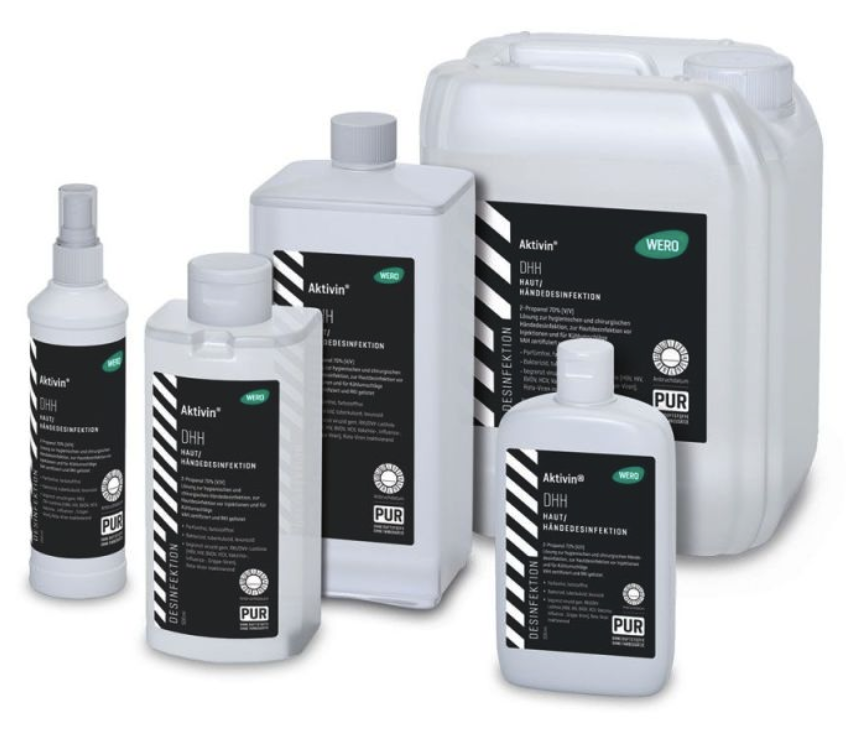
Differentiating between the various spectrums of activity in a hand sanitiser
The choice of the right disinfectant depends on the area of application. It does not make sense to use a product that is effective against a large number of germs everywhere. This would lead to increased resistance and a reduction in effectiveness in the long term.
The different efficacy spectra of hand sanitisers are divided into four groups:
- Bactericidal: acts against bacteria
- Fungicide: acts against fungi
- Limited virucidal: can render enveloped viruses harmless (enveloped viruses include, for example, the new coronavirus, hepatitis B and hepatitis C viruses and HIV)
- Virucidal: combats all viruses, including non-enveloped viruses such as noroviruses
Disinfect hands properly - step by step
Hand sanitising requires care and time in order to be effective and efficient. Hands must be clean and, above all, dry before starting to sanitise. Applying a hand sanitiser to damp hands significantly reduces its effectiveness. The individual steps are similar to washing your hands.
- Take the prescribed amount of hand sanitiser and rub your palms together. Please also consider your wrists.
- Now rub the palm of your right hand over the back of your left hand and vice versa.
- Place the palms of your hands on top of each other. Interlace and open the fingers of both hands five times alternately.
- Now rub the outside of the fingers into the opposite palms with interlaced fingers.
- Rub the right thumb into the closed palm of the left hand in a circular motion and vice versa.
- Finally, make circular movements with closed fingertips in the opposite palm.
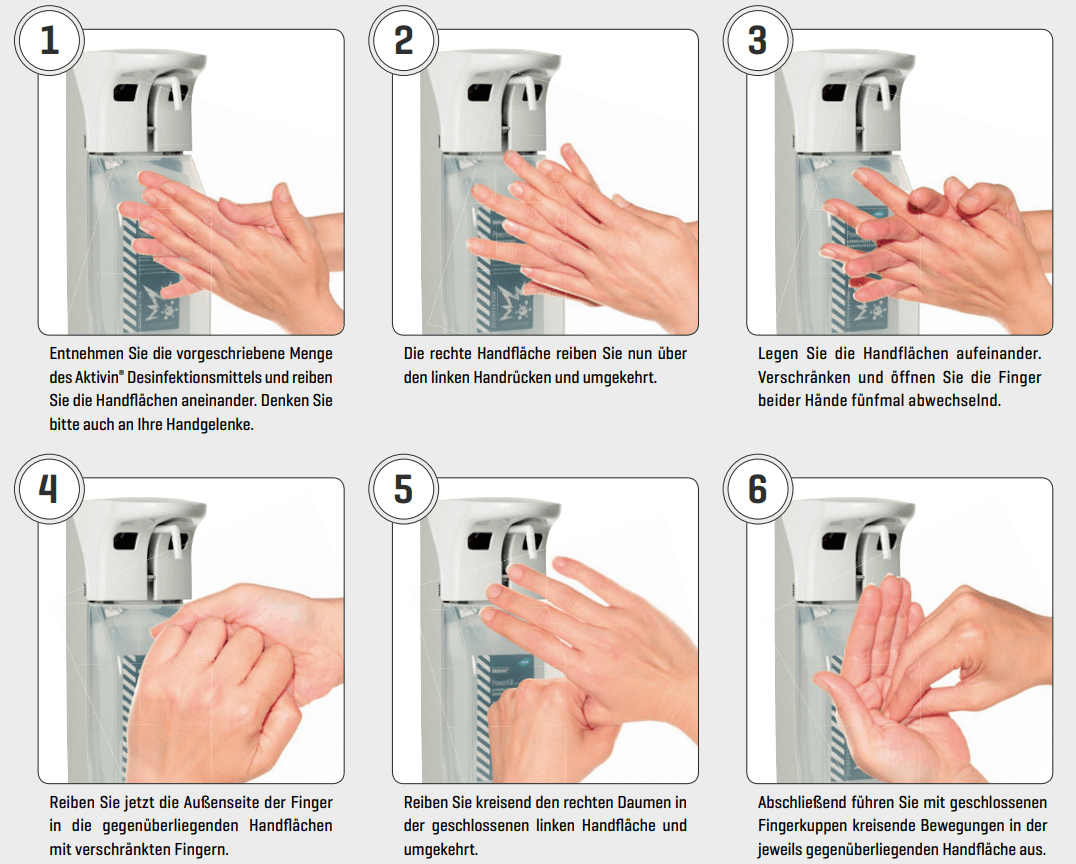
- Take the prescribed amount of hand sanitiser and rub your palms together. Please also remember your wrists.
- Now rub the palm of your right hand over the back of your left hand and vice versa.
- Place the palms of your hands on top of each other. Interlace and open the fingers of both hands five times alternately.
- Now rub the outside of the fingers into the opposite palms with interlaced fingers.
- Rub the right thumb into the closed palm of the left hand in a circular motion and vice versa.
- Finally, make circular movements with closed fingertips in the opposite palm.
The exposure time for hygienic hand disinfection is usually between 15 and 30 seconds. The exposure time for surgical hand disinfection can be up to 1.5 minutes. The exposure times can vary depending on the product.
When should hands be disinfected?
There are various scenarios in the working environment where hands should be thoroughly sanitised.
- Before handling food or medication
- After using the toilet and blowing your nose
- After contact with blood, secretions, contaminated or potentially contaminated objects such as door handles, window handles and drawers
- After cleaning work, disposing of rubbish or germ-infested material
- After using disposable gloves
- Before starting work
- Before and after any direct contact with patients
The use of hand sanitiser gel may also be advisable at home under special circumstances: namely if sick or immunocompromised people live in the household. For example, additional hand disinfection is important if a family member has contracted a highly contagious disease such as influenza or norovirus.
Hand sanitiser versus hand washing
In principle, hand washing is the basic form of hand hygiene and is somewhat gentler on the skin in comparison. As a rule of thumb, dirt on the hands is removed by washing hands with soap and water. Hand sanitising, on the other hand, is recommended if you touch objects with your hands that have previously been touched by many people. This is the case, for example, after touching a door handle or a shopping trolley and in any case at the workplace. Hand disinfection is always mandatory in the medical field.
Hand sanitiser for viruses such as SARS-CoV-2
Hand disinfection and hygiene is one of the most important measures against coronaviruses. Disinfectants that are labelled at least as "limited virucidal" are suitable for hand hygiene and are correspondingly effective against SARS-CoV-2. This labelling is important as it guarantees effectiveness against so-called enveloped viruses, which include the coronavirus. Preparations that are not labelled as effective against viruses, e.g. those that are only effective against bacteria or fungi, are ineffective against the SARS-CoV-2 virus.
Measures for regular use of hand sanitiser
Anyone who uses a hand sanitiser several times a day for professional reasons is working with a targeted skin protection concept. This includes, above all, skin care products or skin creams that ensure the long-term health of the skin. As a rule, a skin protection product is used during work and the skin care product only after work.
The skin protection concept is important in order to effectively counteract possible drying out of the skin. In addition to a suitable hand cream, it is also helpful to use moisturising disinfectants, which already counteract dehydration.
The RKI and VaH list will help you choose the right hand sanitiser
The lists of the RKI (Robert Koch Institute) and the VAH (Verbund für Angewandte Hygiene e.V.) help in choosing the right hand sanitiser. The lists provide information on the spectrum of efficacy, the certification status and the ingredients of the products.
Skin compatibility of Aktivin® hand sanitisers
Alcohol-based hand sanitisers are generally well tolerated by the skin. However, if a burning sensation or reddening of the skin occurs after using hand sanitiser gel, this may be an indication of damaged skin, even if this is not necessarily visible. In these cases, the alcohol can easily penetrate the living cells in the top layer of the skin and cause these symptoms.
Alcohol-based disinfectants have the advantage that although the skin lipids are dissolved by the disinfectant in the horny layer and displaced from their structural order, they still remain on the skin.
The Aktivin® hand disinfectant
Aktivin® hand sanitisers are our best-selling hand sanitisers for professional use and every private household. Depending on the product type, they provide reliable protection against bacteria, enveloped and non-enveloped viruses and fungi. They therefore offer reliable protection against germs and pathogens.
Our Aktivin® hand sanitisers are fragrance-free, particularly kind to the skin, suitable for allergy sufferers and available in various container sizes.
Conclusion
Ever since the coronavirus pandemic, hand sanitisers have become an integral part of our everyday lives. Whether for first aid at work, hygiene and occupational safety, in the office or at home - high-quality and safe products are indispensable in every respect.
Are you still looking for the right disinfectant for your hand hygiene? You are guaranteed to find what you are looking for in the WERO online shop! Our products are of the highest quality and are available in different container sizes.
Do you have any questions? Then contact us directly - we will be happy to help you!

